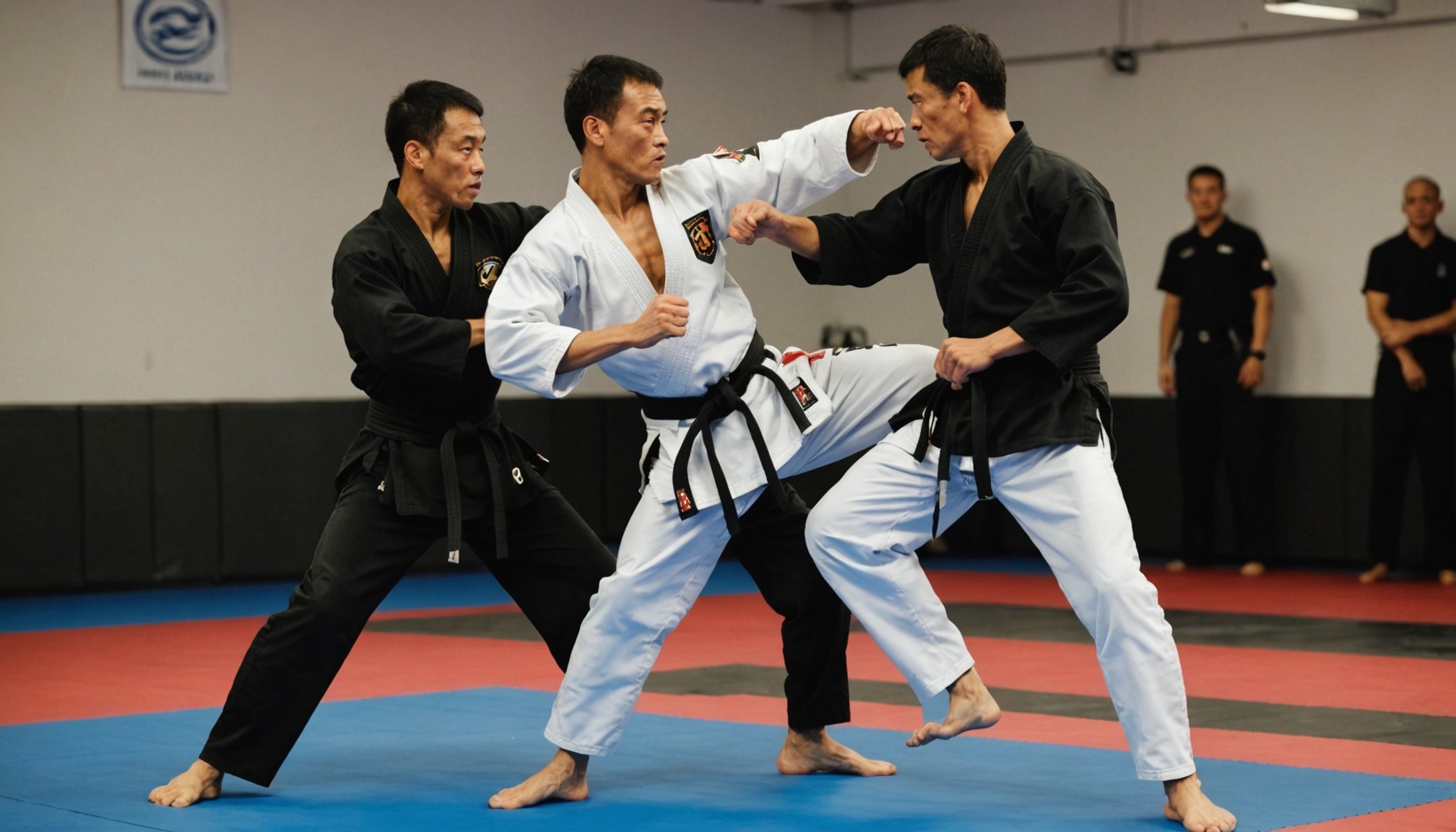In the ever-evolving world of martial arts, practitioners frequently find themselves faced with the challenge of transitioning between various fighting styles. Whether you are an aspiring fighter or a seasoned practitioner, understanding the nuances of different techniques can enhance your effectiveness in combat. This article delves into the strategies that can help you master the art of transitioning between styles, focusing on the importance of adaptability in training and combat situations. By exploring the fundamentals of striking, wrestling, and other mixed styles, we provide insights on how to become a more versatile fighter.
Understanding the Basics of Different Fighting Styles
Martial arts encompass a wide range of techniques and philosophies, each with its unique approach to combat. To effectively transition between styles, it is crucial to first grasp the basics of the various methods you may encounter.
Also read : Ultimate guide to off-season nutrition: key dietary tips for uk boxers
Striking arts, such as Muay Thai, boxing, and karate, focus primarily on delivering powerful blows using fists, elbows, knees, and feet. These techniques emphasize speed and precision, honing a fighter’s ability to incapacitate an opponent swiftly. In contrast, grappling arts like Brazilian jiu-jitsu and judo concentrate on ground control and submissions. Practitioners learn to leverage their body weight and positioning to gain dominance over their adversaries.
Furthermore, mixed martial arts (MMA) combines elements from both striking and grappling disciplines, requiring fighters to adapt swiftly to varying combat scenarios. Understanding these core principles can significantly enhance your ability to switch between styles.
Have you seen this : Unlocking the Power of Yoga: How UK MMA Fighters Can Enhance Their Training Routine
When transitioning between disciplines, consider the following:
- Training Your Body: Each style demands different physical attributes. Striking arts require explosive power and speed, while grappling arts focus on strength and flexibility. Incorporating drills from multiple disciplines into your training regimen helps develop a well-rounded athleticism.
- Mindset Shift: Each style has its unique strategy and mindset. Familiarizing yourself with these mental frameworks prepares you to adapt quickly during a fight.
- Cross-Training: Engaging in multiple styles simultaneously can provide invaluable insights into the strengths and weaknesses of each method, facilitating smoother transitions in combat.
By understanding the foundations of various fighting styles, you set the groundwork for a successful transition between techniques, ultimately becoming a more effective martial artist.
The Importance of Adaptability in Combat
Adaptability is a vital trait in any martial artist, especially when transitioning between different combat styles. The ability to alter your approach based on the situation or opponent can be the key to success in a bout.
Adaptability involves recognizing when to implement striking techniques, when to engage in grappling, and how to blend both styles effectively. For instance, if an opponent is formidable in striking but has a weakness in ground defense, a fighter might opt to close the distance and initiate grappling exchanges.
To enhance your adaptability, consider these practical strategies:
- Sparring with Diverse Partners: Regularly spar with practitioners from different martial backgrounds. This exposure will challenge you to think on your feet and apply techniques from various styles in real-time.
- Scenario Training: Simulating different fight scenarios prepares you for the unpredictability of combat. For instance, practicing how to transition from a standing position to the ground can build confidence in your grappling abilities.
- Mindfulness and Observation: Pay meticulous attention to your opponent’s movements. Understanding their tendencies allows you to adjust your strategy dynamically, leading to effective transitions when necessary.
Ultimately, the goal is to cultivate a mindset that embraces change and encourages experimentation. A martial artist who refuses to be boxed into a single style can explore the myriad of possibilities martial arts has to offer.
Essential Techniques for Effective Transitions
When transitioning between different styles, mastering specific techniques is crucial for seamless execution in a fight. These techniques serve as bridges connecting striking and grappling, enabling you to flow between styles effortlessly.
One fundamental technique is the takedown, which allows a fighter to bring an opponent to the ground from a standing position. Learning various takedowns from styles such as judo and wrestling can significantly enhance your ground game. Once on the ground, transitioning into submissions or positional control becomes paramount.
Another critical technique is the strike to clinch, commonly used in Muay Thai. This technique allows a fighter to deliver powerful strikes before closing the distance to initiate a grappling exchange. Developing proficiency in clinching techniques provides a solid foundation for transitioning between striking and grappling.
Moreover, understanding defensive techniques is equally important. Enhancing your defensive skills in both striking and grappling arts prepares you for effective counter-strategies. For example, knowing how to evade a strike can set you up for a takedown, while defending against a takedown can create opportunities for striking.
Key Techniques to Focus On:
- Takedowns: Learn various takedown techniques from wrestling and judo to establish ground control.
- Strikes: Develop a range of striking techniques to maintain your offensive capabilities during transitions.
- Defensive Maneuvers: Master defensive techniques to counter opponents and create openings for counterattacks.
By focusing on essential techniques that facilitate transitions, you will enhance your ability to adapt during fights, making you a more formidable opponent.
The Role of Conditioning and Training
Effective transitions between fighting styles hinge not just on technical skill but also on the physical conditioning of the martial artist. Rigorous training regimens tailored to enhance endurance, strength, and flexibility can significantly improve your performance during fights.
Endurance training is critical for sustaining high energy levels throughout a bout. Incorporate aerobic exercises such as running, cycling, and swimming to build cardiovascular endurance, allowing you to maintain focus and agility as you transition between techniques.
Strength training is equally important. Targeting muscle groups relevant to your fighting style will enhance your ability to execute powerful strikes and stabilize your body during grappling exchanges. Compound exercises such as squats, deadlifts, and bench presses can help develop overall strength, supporting your combat capabilities.
Flexibility training, often overlooked, plays a vital role in performance. Incorporating dynamic stretching and mobility work into your routine can improve your range of motion, making it easier to execute high kicks and evade takedowns. Additionally, yoga or Pilates can enhance balance and core strength, crucial for any martial artist.
Fitness training should also include sport-specific drills that simulate the demands of combat. For instance, practicing bag work, pad drills, and sparring sessions can sharpen your reflexes and decision-making skills under pressure.
By prioritizing conditioning and tailored training, you position yourself to transition effectively between different fighting styles, ensuring that you maintain peak physical performance during combat.
Transitioning between different fighting styles is a hallmark of a skilled martial artist. By understanding the fundamentals of various techniques, embracing adaptability, mastering essential movements, and prioritizing conditioning, you can effectively enhance your combat capabilities.
As you embark on your journey of blending striking, wrestling, and other mixed styles, remain open to learning and evolving. Each session presents an opportunity to refine your skills, and by doing so, you cultivate the resilience needed to thrive in the dynamic world of martial arts. Embrace the art of transition, and you will undoubtedly become a more versatile and accomplished fighter.










